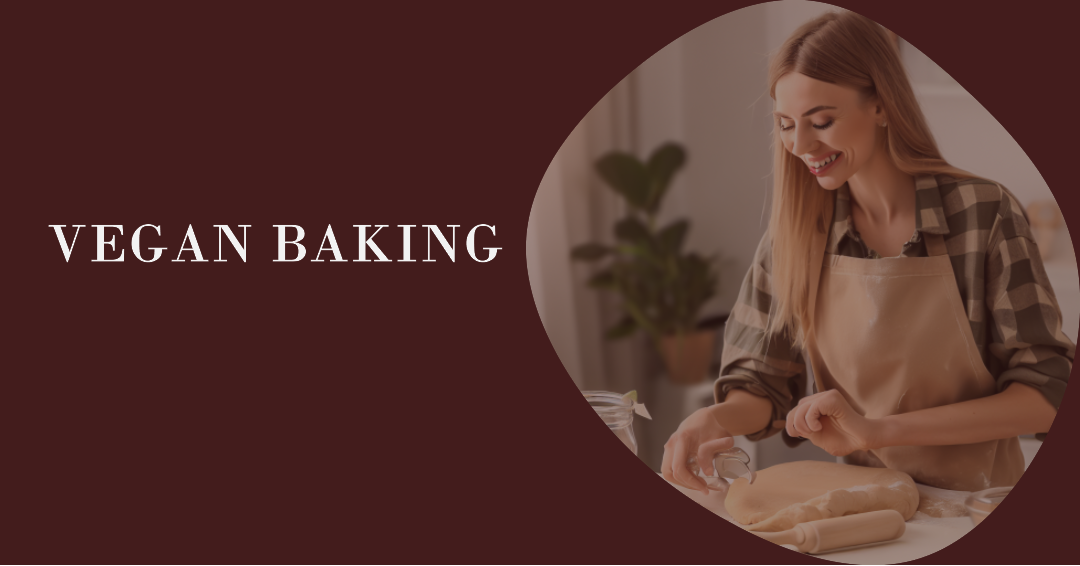Vegan baking differs from regular baking in that it avoids using any animal-based ingredients. This means excluding common baking ingredients such as eggs, butter, milk, and other dairy products. Instead, vegan baking relies on plant-based alternatives to achieve similar textures and flavors. Here are some of the key differences between vegan baking and regular baking:
- Egg substitutes: In regular baking, eggs play a crucial role as a binder, providing structure and moisture to baked goods. In vegan baking, various egg substitutes are used, such as flaxseed or chia seed mixture (mixed with water to form a gel), applesauce, mashed bananas, silken tofu, or commercial egg replacers.
- Dairy alternatives: Regular baking often uses butter and milk for richness and moisture. In vegan baking, these animal-based ingredients are substituted with plant-based options like vegetable oil, coconut oil, or non-dairy margarine for butter, and non-dairy milk such as almond milk, soy milk, oat milk, or coconut milk instead of cow’s milk.
- Sweeteners: While both vegan and regular baking can use sugar as a sweetener, some vegans prefer to use alternatives like agave syrup, maple syrup, or date syrup, which do not involve the use of refined sugar.
- Frostings and toppings: In vegan baking, traditional buttercream frostings made with dairy butter are replaced with vegan butter or coconut oil-based frostings, and cream cheese frostings are made using plant-based cream cheese alternatives.
- Binding agents: Besides egg substitutes, additional binders like mashed fruits, nut butter, or even arrowroot powder are often used in vegan baking to help hold the ingredients together.
- Rising agents: The use of baking powder and baking soda remains the same in both vegan and regular baking.
- Flavorings and extracts: Flavorings like vanilla, almond, and other extracts are vegan-friendly, so they are commonly used in both types of baking.
- Chocolate: Dark chocolate without dairy additives is suitable for vegan baking. Many vegan-friendly chocolate chips and chocolate bars are available.
- Texture and Moisture: In some recipes, vegan baked goods may have a slightly different texture and moisture level compared to their non-vegan counterparts. The absence of eggs and dairy can affect the crumb structure and overall consistency of the final product. However, with the right ingredients and techniques, it’s possible to achieve similar results.
- Leavening Agents: Baking powder and baking soda are commonly used leavening agents in both vegan and regular baking. However, without eggs, some vegan recipes may rely more on these leavening agents to achieve the desired rise in baked goods.
- Nut and Seed Flours: Vegan baking often incorporates nut flours (such as almond flour) and seed flours (like ground flaxseed) as alternatives to wheat flour. These flours contribute unique flavors, textures, and nutritional benefits to the recipes.
- Aquafaba: Aquafaba is the liquid from a can of chickpeas or the cooking liquid from cooking chickpeas from scratch. It can be whipped like egg whites and used as an excellent egg white replacement in recipes like meringues, macarons, and mousses.
- Gelatin Alternatives: Gelatin, derived from animal collagen, is used in some desserts and jellies. In vegan baking, agar-agar, which is made from seaweed, is a common substitute for achieving a similar gelatinous texture.
- Nutritional Yeast: Nutritional yeast is a popular ingredient in vegan baking, especially for savory dishes. It adds a cheesy and nutty flavor to various recipes, including pizza dough and savory scones.
- Allergen Considerations: Vegan baking can be a great option for individuals with certain allergies, as it naturally avoids common allergens like eggs, dairy, and sometimes wheat (in gluten-free vegan recipes).
- Ethical and Environmental Factors: Many people choose vegan baking for ethical and environmental reasons, as it reduces the demand for animal-based products and their associated environmental impacts.
- Adaptability: Vegan baking allows for a lot of creativity and adaptation. Since there are so many plant-based ingredients available, bakers can experiment with different flavors, textures, and combinations to create unique and delicious treats.
- Commercial Options: Over the years, the popularity of vegan baking has led to an increase in the availability of vegan-friendly baking products and substitutes in grocery stores. You can find vegan versions of chocolate chips, margarine, plant-based milk, and more, making it easier than ever to bake without animal products.
It’s worth noting that while vegan baking can produce delicious and satisfying results, some recipes may require slight adjustments or experimentation to achieve the desired texture and taste. Fortunately, as vegan baking has grown in popularity, there is now a wealth of vegan recipes and resources available to help bakers create a wide variety of delightful animal-free treats.

